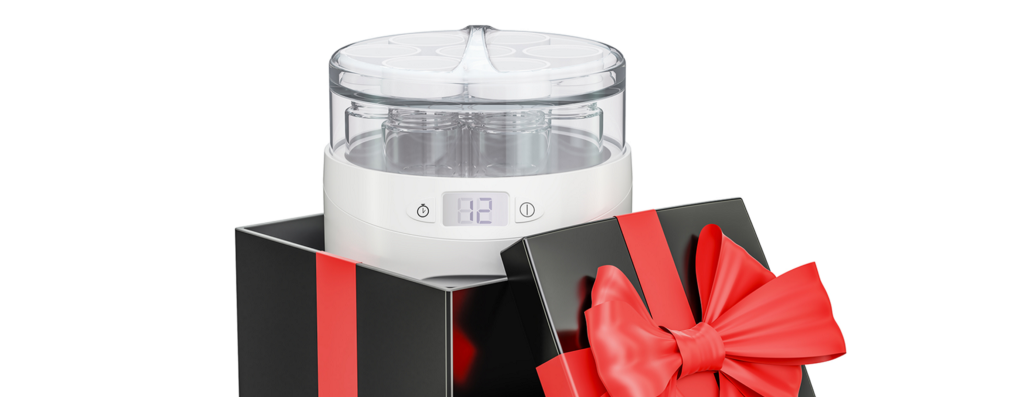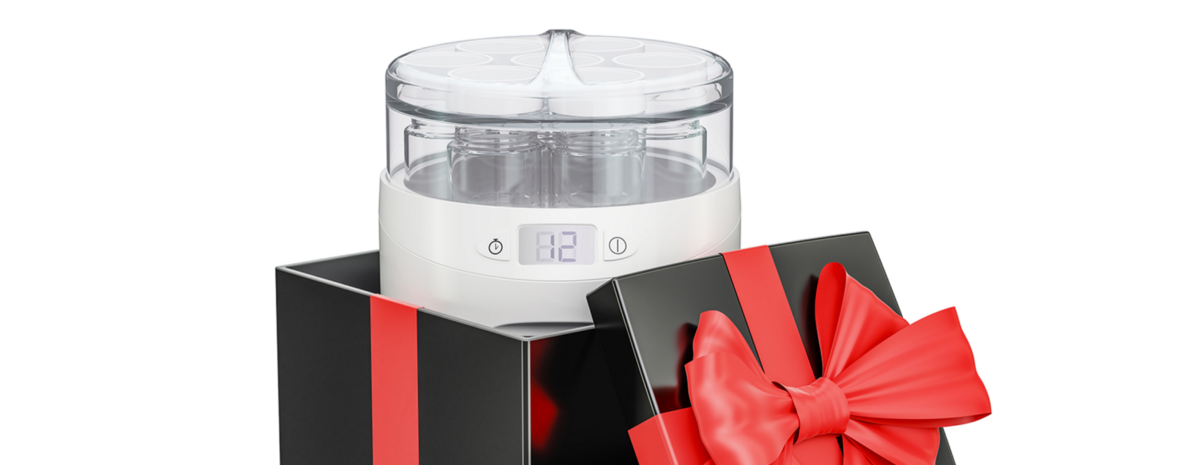An incumbent process could be a bigger threat than any competing products.

Several years ago, I was given a yogurt maker as a Christmas gift.
A (nameless) relative had been quite astute, having heard me remark on at least a couple of occasions “yeah, we take yogurt on our breakfast now…” Maybe they had heard it too much. Having identified what appeared to be a need, they presented us with a shiny, new yogurt maker.
Sadly the gift went unused. The contraption remained tucked away in the corner of a cupboard until it made its way to a charity shop some months later. Not the outcome my thoughtful relative intended.
What went wrong?
It’s not that I was ungrateful. My relative was certainly making a thoughtful gesture. They knew that this might be a source of limitless yogurt for years to come. Maybe I would try my own recipes. Save some money on store-bought yogurt.
My relative could not have known was that they were asking me to change my behaviour.
Moving from pots of inexpensive yogurt with the weekly shop, I would now need to:
- Learn how to use the yogurt maker
- Buy individual ingredients
- Find time to make the yogurt
- Find space in the kitchen or fridge for the yogurt maker itself
Rather than do all of that, I stashed it away.
Adoption is a challenge for all products and innovations. At the core of this is the requirement to replace incumbent routines or habits. This requires moving people away from how they currently do things and using your product instead.
Over 50 years ago, Everett Rogers addressed these concepts in his seminal work “Diffusion of Innovations”, focusing on new products in the medical and agricultural industries. Years later, digital technology has enabled and accelerated the development of diverse, ground-breaking products, but all facing the same fundamental challenges.
“Never underestimate the power of inertia” — Richard H. Thaler, Nudge: Improving Decisions About Health, Wealth, and Happiness.
Outcomes are the successful manifestation of behaviour change. At its simplest, a change may mean starting to do something new (physical activity, for instance) or doing more of something (perhaps managing tasks in a to-do app). A full spectrum of behavior change was mapped out comprehensively by BJ Fogg as a part of his work in the Stanford Persuasive Technology Lab. The Fogg Behaviour Grid remains an authoritative reference on the topic.
This link between adoption and desired behaviour in the product is often missed by product teams who work in a fictional future where their product is thriving. Designers in particular need to be aware of the process that a product is replacing, and which behaviours are intrinsic to that process.
Questions that can help to frame the challenge include:
- Which elements of the current process will be hardest to let go of?
- Do the outcomes have any dependencies?
- What behaviors do you need to alter to deliver success for your product?
- Is the current process handled by one or multiple other products?
“People’s choices are pervasively influenced by the design elements selected by choice architects.” — Richard H. Thaler, Nudge: Improving Decisions About Health, Wealth, and Happiness
It is tempting to interpret this challenge as one of on-boarding, and creating a delightful first-time run experience. It can help, of course. But doing this alone and then hoping for the best is blind faith.
No matter how delightful it may look, a successful product must facilitate and inspire the behaviors that motivate its adoption, and ultimately deliver successful outcomes.
In her book Engaged: Designing for Behavior Change, author Amy Bucher Ph.D. spells out the need for tracking behaviors over time, including both:
- short term measures that indicate early successes.
- longer-term tracking confirming that behaviors have changed, indicating that the product has achieved adoption.
A new product may represent innovation in a sector or industry, but the path to change is littered within. This can be particularly evident in businesses where incumbent processes affect multiple departments and teams. Ripping those processes out can be painful, and take time. Innovation can be intimidating and, no matter how positive, will not always be welcomed with open arms.
Understanding this need for behavior change, whether replacing old or creating new, is a key milestone for designers wanting to achieve ever-greater meaning with their work. As choice architects, designers hold responsibility for facilitating the behaviors they want to see articulated in interactions with the products we design. Achieving this requires a deep understanding of user motivations and what they perceive as success.
By understanding the behaviours which need to change, designers can better anticipate and address the inertia which could otherwise leave their product festering on a metaphorical shelf, an unwanted gift.

Your product’s biggest competitor may not be what you think was originally published in UX Collective on Medium, where people are continuing the conversation by highlighting and responding to this story.
